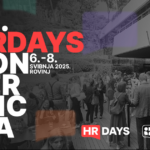Engagement, productivity, and employee retention are terms that are increasingly heard in the context of human resource management today. However, the issue of employee retention was also present at Ford's early in the 20th century. Ford raised wages to an unprecedented $5 per eight-hour workday (compared to the norm of $2.25 for a nine-hour workday), but didn't rely solely on external motivation. Hence, the company had a "Sociological Department" tasked with "employee standardization". Today, we cannot "standardize" employees, nor can we standardize knowledge. But perhaps we can do something else.
Has the era of "banana time" and seven types of coffee passed? Is it normal for the average job tenure to be one year? Is the problem with "old" or "new" generations? Is the reason for job change external validation, the pursuit of higher pay, or sometimes an escape from the unknown? What can we learn from Henry Ford?
According to Gallup's State of the Global Workplace: 2023 Report, 13% of people are engaged, 72% are not engaged, and 15% are actively disengaged.
Should all efforts be directed towards employer branding or employee retention? How do we balance between the two? Is there a common denominator in all these questions and statements, and what can science, or neuroscience, tell us about it?
Does the answer lie in metacognition and cognitive motivation?
Can we consider true the claim that members of the "older" generations, who had to rely on traditional learning methods, thereby encouraged the development of metacognitive skills in terms of planning, monitoring, and evaluating learning (books, manuals), while today's generations are skilled in finding information online, but the question arises of how deeply they understand and process that information and ultimately apply it to make informed decisions, and so on?
This lecture will reveal how science can transform work environments, improve team dynamics, and set new standards in human resource management.





